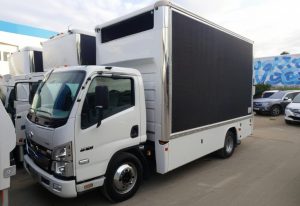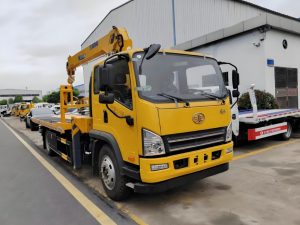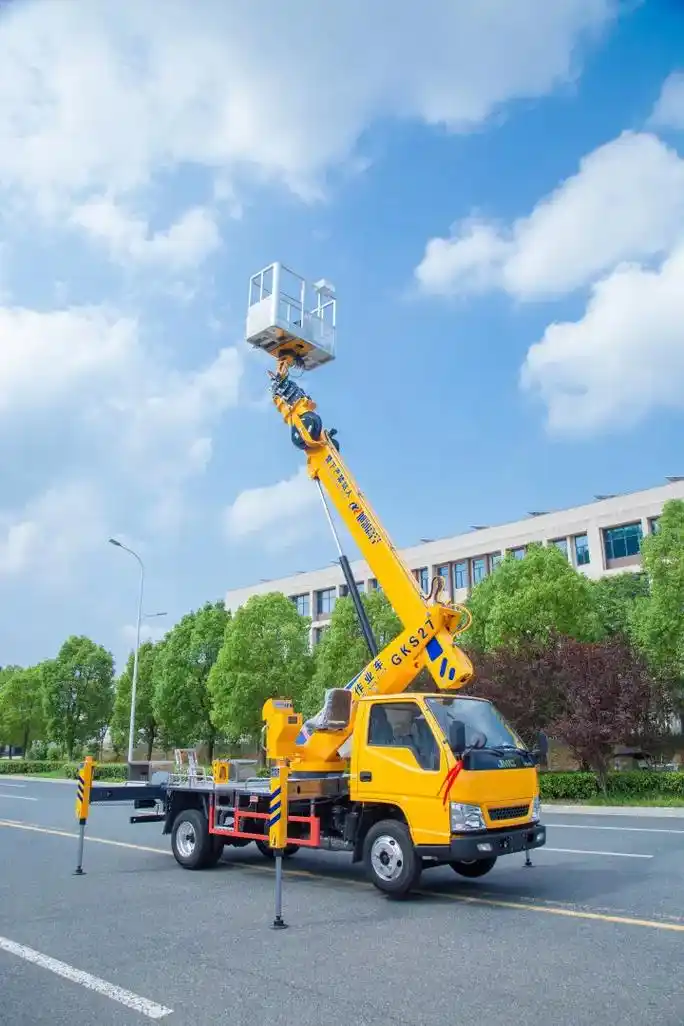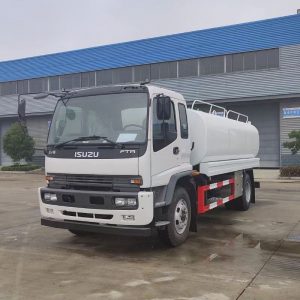Table of Contents
Toggle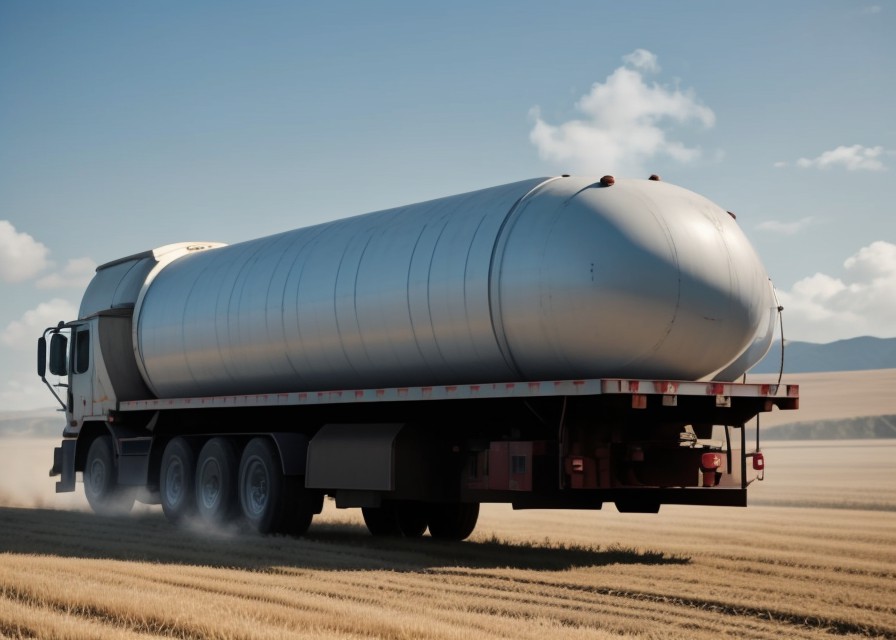
Introduction
Have you ever wondered how massive farms manage to feed thousands of animals efficiently? Enter the bulk feed truck—a marvel of modern agricultural technology. These trucks are the unsung heroes of the agriculture and livestock industry, ensuring that feed gets delivered in large quantities quickly and safely.
Bulk feed trucks play a critical role in maintaining the health and productivity of livestock. These vehicles are designed to transport large quantities of animal feed from production facilities directly to farms. This not only streamlines the feeding process but also ensures that the feed remains fresh and uncontaminated during transit.
The importance of bulk feed trucks cannot be overstated. They provide a reliable solution for farmers and livestock managers, reducing labor costs, improving efficiency, and ensuring that animals receive high-quality nutrition. In an industry where time is money and efficiency is paramount, bulk feed trucks are indispensable.
History and Evolution of Bulk Feed Trucks
Before we had these high-tech trucks, feed delivery was a labor-intensive process. Farmers used to manually load sacks of feed onto wagons or trucks—a time-consuming task that required a lot of manpower. But as technology advanced, so did our methods of feed delivery.
Early Methods of Feed Delivery
In the early days of agriculture, feed delivery was a manual and labor-intensive process. Farmers relied on simple tools like wheelbarrows and horse-drawn carts to transport feed from storage areas to animal pens. This method was not only time-consuming but also physically demanding, requiring significant manpower to move even modest quantities of feed.
As farms grew larger and livestock operations became more complex, the limitations of manual feed delivery became increasingly apparent. The need for a more efficient and scalable solution led to the development of mechanized feed delivery systems.
Technological Advancements
The mid-20th century marked a turning point in the history of feed delivery with the introduction of mechanized bulk feed trucks. These early models were relatively simple but revolutionized the industry by drastically reducing the time and labor required to transport feed. Early bulk feed trucks featured basic storage compartments and manual unloading mechanisms, which, while rudimentary by today’s standards, represented a significant leap forward in efficiency.
Over the years, technological advancements have continued to drive the evolution of bulk feed trucks. Modern trucks are equipped with sophisticated features such as automated loading and unloading systems, computerized control panels, and GPS navigation. These innovations have not only improved the efficiency and accuracy of feed delivery but also enhanced the safety and reliability of these vehicles.
Types of Bulk Feed Trucks
Bulk feed trucks come in various types, each designed for specific needs.
Standard Bulk Feed Trucks
These are the most common type you’ll see on farms. They come equipped with multiple compartments for different types of feed, making it easy to deliver exactly what each animal needs.
Standard bulk feed trucks are versatile and suitable for a wide range of applications. They are typically equipped with multiple storage compartments, allowing farmers to transport different types of feed simultaneously. This flexibility is particularly useful for operations with diverse livestock, as it ensures that each animal receives the appropriate type of feed.
Specialty Bulk Feed Trucks
Designed for unique applications, specialty bulk feed trucks might be used for delivering specialized feeds or operating in challenging terrains like mountains or rough roads.
Specialty bulk feed trucks are built to handle specific challenges that standard models may not be equipped to address. For example, some specialty trucks are designed for use in rugged terrains, featuring enhanced suspension systems and all-terrain tires to navigate rough roads and steep inclines. Others may be tailored for transporting specialized feeds that require unique handling or storage conditions.
Custom-Built Bulk Feed Trucks
For those who have specific requirements that off-the-shelf models can’t meet, custom-built bulk feed trucks are the answer. These are tailored to meet the exact needs of a farm or livestock operation.
Custom-built bulk feed trucks offer a high degree of customization, allowing farmers to design a vehicle that perfectly suits their specific needs. Whether it’s additional storage capacity, specialized unloading mechanisms, or advanced control systems, custom-built trucks can be configured with a wide range of features to enhance efficiency and performance.
Components of a Bulk Feed Truck
Understanding the anatomy of these trucks can help you appreciate their complexity and efficiency.
Chassis and Engine
The backbone of any bulk feed truck is its chassis and engine. These need to be robust enough to handle heavy loads while offering good fuel efficiency.
The chassis serves as the structural framework of the truck, supporting all other components and ensuring stability during transport. It must be strong enough to withstand the weight of large quantities of feed while maintaining structural integrity over rough terrains. The engine, on the other hand, provides the power needed to move the truck efficiently over long distances. Modern engines are designed for optimal fuel efficiency, reducing operating costs and minimizing environmental impact.
Feed Storage Bins
These are specially designed compartments that hold different types of feed. They are usually made from materials that prevent contamination and keep the feed fresh.
Feed storage bins are a critical component of bulk feed trucks, designed to hold large quantities of animal feed securely during transport. These bins are typically made from durable materials such as stainless steel or aluminum, which offer excellent resistance to corrosion and contamination. The bins are also equipped with sealing mechanisms to keep the feed fresh and prevent exposure to moisture or pests.
Auger and Delivery Systems
An auger is a spiral-shaped tool that helps in moving the feed from the storage bins to the delivery point. These systems are designed to minimize waste and ensure even distribution.
The auger system is responsible for moving feed from the storage bins to the unloading point. It consists of a helical screw blade that rotates within a cylindrical tube, effectively transporting the feed along its length. Auger systems are designed for precision and efficiency, ensuring that feed is delivered evenly and without waste. Some advanced models even feature multiple augers for handling different types of feed simultaneously.
Control Systems
Modern bulk feed trucks come with advanced control systems that allow for precise measurement and distribution of feed. Some even come with computerized controls that can be operated remotely.
Control systems are essential for managing the various functions of a bulk feed truck. These systems allow operators to monitor and adjust key parameters such as feed quantity, distribution rate, and bin levels in real-time. Advanced control systems often include computerized interfaces with touchscreens and remote control capabilities, enabling operators to make adjustments quickly and accurately from within the cab or even remotely via mobile devices.
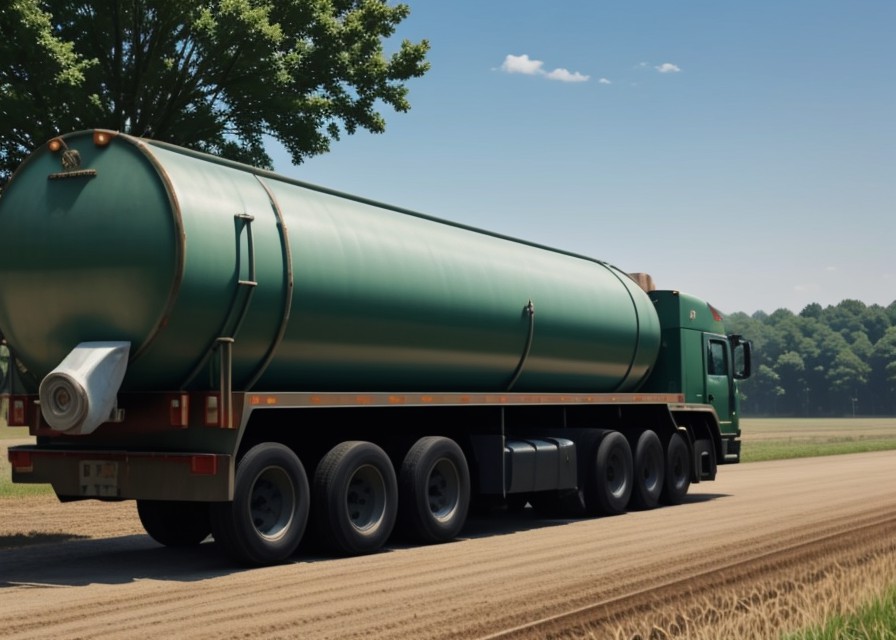
How Bulk Feed Trucks Work
Understanding the operation of bulk feed trucks can provide valuable insights into their efficiency and functionality. Let’s break down the process into three main stages: loading, transportation, and unloading.
Loading Process
First up is loading the truck. This is often done using silos or other large storage containers. The feed is poured into the truck’s bins through openings at the top.
The loading process is critical to ensure that the feed is distributed evenly across the storage bins. Typically, large farms or feed mills use automated systems to load feed into the trucks. These systems may include conveyor belts, pneumatic blowers, or gravity-fed hoppers that transfer feed from storage silos to the truck’s bins. Ensuring an even distribution of feed within the bins is essential to maintain the truck’s balance and stability during transport.
Transportation Mechanisms
Once loaded, the truck hits the road. Thanks to their powerful engines and sturdy chassis, these trucks can transport heavy loads over long distances without breaking a sweat.
During transportation, the truck’s design ensures that the feed remains secure and uncontaminated. The chassis and suspension system are engineered to absorb shocks and vibrations, protecting the feed from damage. Modern bulk feed trucks are equipped with advanced GPS navigation systems, allowing drivers to choose the most efficient routes and avoid obstacles or delays. Additionally, some trucks feature climate control systems within the bins to maintain optimal conditions for the feed, preventing spoilage or degradation.
Unloading Process
When it’s time to unload, the auger system kicks into gear. The driver can control the flow of feed from inside the cab, ensuring that each animal gets its proper share without any wastage.
The unloading process is where bulk feed trucks truly shine in terms of efficiency and precision. The auger system transports the feed from the bins to the delivery point, which could be a trough, silo, or another storage container. Operators can control the rate and quantity of feed being dispensed using the truck’s control system. This ensures that each delivery is accurate and meets the specific needs of the livestock being fed. Some advanced trucks even feature automated unloading systems that can be programmed to dispense feed at pre-set intervals, reducing the need for manual intervention.
Advantages of Using Bulk Feed Trucks
Why should you consider using a bulk feed truck? The benefits are numerous and can significantly impact the efficiency and profitability of your farming operations.
Efficiency and Time-Saving
Gone are the days when farmhands spent hours lugging sacks of feed around. A bulk feed truck can deliver large quantities quickly, freeing up your time for other important tasks.
One of the primary advantages of bulk feed trucks is their ability to streamline the feeding process. By automating feed delivery, these trucks drastically reduce the time and labor required to distribute feed across a large farm. This efficiency allows farmworkers to focus on other critical tasks such as animal care, maintenance, and record-keeping, ultimately improving overall productivity.
Reduced Labor Costs
With fewer hands needed for feeding tasks, you can save significantly on labor costs. This is especially beneficial for large operations where labor can be one of the biggest expenses.
Labor costs are a significant expense for any farming operation. By utilizing bulk feed trucks, farmers can minimize the need for manual labor in feed distribution. This reduction in labor requirements not only lowers costs but also reduces the risk of workplace injuries associated with manual feed handling. Additionally, automated feed delivery systems ensure consistent and accurate feeding, further enhancing efficiency and reducing waste.
Enhanced Feed Quality and Safety
Bulk feed trucks are designed to keep feed fresh and uncontaminated during transport. This ensures that your animals are getting high-quality nutrition every time.
Maintaining feed quality is crucial for the health and productivity of livestock. Bulk feed trucks are equipped with features that protect feed from contamination and spoilage during transport. Sealed storage bins prevent exposure to moisture, pests, and environmental contaminants. Some advanced models even include climate control systems to maintain optimal temperature and humidity levels within the bins. By ensuring that animals receive high-quality feed, farmers can promote better health, growth, and productivity in their livestock.
Considerations When Choosing a Bulk Feed Truck
Choosing the right truck for your needs can be daunting. Here are some factors to consider:
Capacity Requirements
How much feed do you need to transport at once? Make sure to choose a truck that can handle your maximum load without issues.
The capacity of a bulk feed truck is one of the most critical factors to consider. It’s essential to choose a truck with sufficient storage capacity to meet your daily or weekly feed delivery requirements. Overloading a truck can lead to mechanical issues and compromise safety, while underutilizing a truck with excessive capacity can be inefficient and costly. Assessing your farm’s specific needs and selecting a truck with an appropriate capacity will ensure optimal performance and cost-effectiveness.
Terrain and Route Considerations
Think about where you’ll be driving this truck. If you have rough or hilly terrain, you’ll need a model that can handle those conditions without breaking down.
The terrain and routes you’ll be navigating play a significant role in determining the type of bulk feed truck you need. For farms located in areas with rough or uneven terrain, it’s essential to choose a truck with robust suspension systems and all-terrain tires to handle these conditions effectively. Additionally, consider factors such as road width, incline, and potential obstacles when selecting a truck model. Trucks designed for off-road or rugged environments will offer better performance and reliability in challenging conditions.
Customization Options
Do you have specific needs that standard models can’t meet? Many manufacturers offer customization options so you can get a truck that’s perfect for your operation.
Every farming operation is unique, and sometimes standard bulk feed trucks may not fully meet your requirements. Customization options allow you to tailor a truck to your specific needs, whether it’s additional storage compartments, specialized unloading mechanisms, or advanced control systems. Working with manufacturers who offer customization services can help you design a bulk feed truck that aligns perfectly with your operational needs and enhances overall efficiency.
Maintenance and Safety Tips
Keeping your bulk feed truck in tip-top shape is crucial for its longevity and performance.
Regular Maintenance Practices
Regularly check your truck’s engine, tires, and auger systems. Don’t forget to clean out the feed bins to prevent contamination.
Regular maintenance is essential for ensuring the longevity and reliable performance of your bulk feed truck. Key maintenance practices include:
- Engine Checks: Regularly inspect the engine for signs of wear or damage. Ensure that oil levels are adequate, and replace filters as needed.
- Tire Maintenance: Check tire pressure regularly and inspect for any signs of damage or excessive wear. Properly inflated tires improve fuel efficiency and ensure safe handling.
- Auger System Maintenance: Inspect the auger system for any blockages or damage. Lubricate moving parts as needed to ensure smooth operation.
- Feed Bin Cleaning: Regularly clean out the storage bins to prevent contamination from old or spoiled feed. Use food-safe cleaning agents to maintain hygiene standards.
- Electrical System Checks: Inspect wiring and connections for any signs of wear or corrosion. Ensure that all control systems are functioning correctly.
Safety Precautions During Operation
Always follow safety guidelines when operating your bulk feed truck. This includes wearing protective gear, following loading procedures correctly, and keeping an eye out for any mechanical issues.
Safety should always be a top priority when operating bulk feed trucks. Here are some key safety precautions:
- Protective Gear: Always wear appropriate protective gear such as gloves, safety glasses, and steel-toed boots when operating or maintaining the truck.
- Loading Procedures: Follow proper loading procedures to ensure even distribution of feed within the bins. Overloading can compromise stability and safety.
- Unloading Safety: Ensure that all personnel are clear of moving parts during unloading. Use control systems to manage feed flow accurately.
- Emergency Preparedness: Keep emergency equipment such as fire extinguishers and first aid kits readily accessible in case of accidents or mechanical failures.
- Regular Inspections: Conduct regular inspections to identify any potential safety hazards or mechanical issues before they become serious problems.
Environmental Impact and Sustainability
As with any vehicle, bulk feed trucks have an environmental footprint. However, modern advancements are helping to mitigate these impacts and promote more sustainable practices.
Fuel Efficiency and Emissions
Modern trucks are designed to be more fuel-efficient, reducing their carbon footprint. Some even come with eco-friendly features like hybrid engines.
Fuel efficiency is a critical factor in reducing the environmental impact of bulk feed trucks. Innovations in engine technology have led to the development of more fuel-efficient engines that consume less diesel or gasoline while delivering the same level of performance. These engines often incorporate advanced combustion techniques, turbocharging, and electronic control systems to optimize fuel use and minimize emissions.
Additionally, many manufacturers are exploring alternative fuel options such as biodiesel, natural gas, and electricity. Hybrid engines that combine traditional fuel sources with electric power are becoming increasingly popular. These hybrid systems reduce fuel consumption and lower greenhouse gas emissions, contributing to a more sustainable agricultural industry.
Eco-Friendly Innovations
The future is green! Manufacturers are increasingly incorporating sustainable materials and technologies into their designs to make these trucks more environmentally friendly.
Eco-friendly innovations extend beyond fuel efficiency and emissions. Many manufacturers are adopting sustainable materials and production processes to reduce the overall environmental footprint of bulk feed trucks. For example:
- Recycled Materials: Using recycled metals and plastics in the construction of truck components helps reduce waste and conserve natural resources.
- Lightweight Materials: Incorporating lightweight materials such as aluminum and composite plastics reduces the overall weight of the truck, improving fuel efficiency and reducing emissions.
- Energy-Efficient Manufacturing: Implementing energy-efficient manufacturing processes, such as using renewable energy sources and optimizing production workflows, reduces the environmental impact of producing bulk feed trucks.
- Eco-Friendly Paints and Coatings: Using low-VOC (volatile organic compounds) paints and coatings reduces harmful emissions during the manufacturing process and enhances the truck’s environmental profile.
By integrating these eco-friendly innovations, manufacturers are making significant strides toward creating more sustainable bulk feed trucks that align with the goals of environmental stewardship.
Future Trends in Bulk Feed Truck Technology
What does the future hold for bulk feed trucks? Exciting innovations are on the horizon that promise to revolutionize the industry.
Automation and AI Integration
Imagine a world where your bulk feed truck drives itself! Automation and AI are set to revolutionize how we think about feed delivery.
Automation and artificial intelligence (AI) are transforming various industries, and agriculture is no exception. The integration of automation and AI in bulk feed trucks offers numerous benefits:
- Autonomous Driving: Self-driving bulk feed trucks can navigate routes, load feed, and deliver it to specific locations without human intervention. This technology improves efficiency, reduces labor costs, and minimizes the risk of accidents caused by human error.
- Predictive Maintenance: AI algorithms can analyze data from sensors and onboard systems to predict when maintenance is needed. This proactive approach helps prevent breakdowns, extend the lifespan of the truck, and reduce maintenance costs.
- Optimized Routing: AI-powered navigation systems can analyze traffic patterns, weather conditions, and road conditions to determine the most efficient routes. This optimization reduces fuel consumption, minimizes delivery times, and enhances overall efficiency.
- Precision Feeding: AI systems can monitor livestock feeding patterns and adjust feed delivery schedules accordingly. This ensures that animals receive the right amount of feed at the right time, improving their health and productivity.
As automation and AI technologies continue to advance, bulk feed trucks will become smarter, more efficient, and more capable of meeting the evolving needs of the agriculture industry.
Sustainable Materials and Energy Sources
From solar panels to biofuel engines, future trucks will likely incorporate a range of sustainable technologies to minimize their environmental impact.
The shift toward sustainable materials and energy sources is a key trend in the development of future bulk feed trucks. Here are some innovations that are shaping the future:
- Solar Panels: Integrating solar panels on the truck’s surface can harness solar energy to power auxiliary systems such as lighting, climate control, and communication devices. This reduces reliance on traditional fuel sources and lowers operating costs.
- Biofuel Engines: Engines that run on biofuels derived from renewable sources such as plant oils, animal fats, and agricultural waste offer a greener alternative to conventional fuels. Biofuels produce fewer emissions and are biodegradable, making them an environmentally friendly option.
- Electric Trucks: Fully electric bulk feed trucks powered by batteries or hydrogen fuel cells produce zero tailpipe emissions. Advances in battery technology are improving the range and performance of electric trucks, making them a viable option for sustainable feed delivery.
- Recyclable Components: Designing trucks with components that can be easily recycled or repurposed at the end of their lifecycle reduces waste and conserves resources. Manufacturers are increasingly focusing on creating circular economy solutions that promote sustainability.
By embracing these sustainable materials and energy sources, the agriculture industry can reduce its environmental impact while maintaining high levels of efficiency and productivity.


